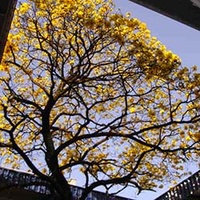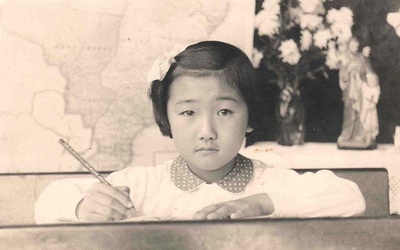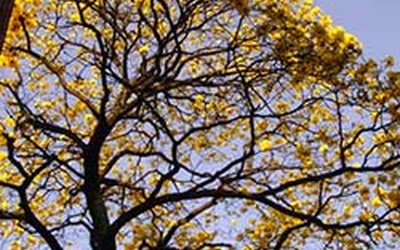OHAYO Bom dia

My grandfather immigrated to Brazil from Japan about 100 years ago, and I was born in Brazil. That is why I strive to become a ‘bridge’ between Brazil and Japan. I treasure the ‘Japan’ rooted deep in my heart, and I want to keep that part of me protected in my homeland of Brazil. This series was composed with those feelings in mind. (“Bom Dia” is “Good morning” in Portuguese)
Stories from this series
Chapter 16: I Am A “Sampa Kid”
Nov. 2, 2011 • Laura Honda-Hasegawa
I was born in São Paulo Hospital on Frei Caneca Road, in the heart of the city of São Paulo. As a child, my mother often took me for a walk to Ipiranga Park. Local Brazilians, seeing me in a pink dress with a Japanese sunshade, used to refer to me as the “Walking Japanese Doll”. I always enjoyed going to Casa Nakaya, which used to be in the João Mendes Plaza. Back then I used to enjoy riding the …
Chapter 15: The Joy of Writing
Oct. 26, 2011 • Laura Honda-Hasegawa
I feel joy from within my heart through writing. Writing about things has given me a feeling of purpose in life, and thanks to that I’ve been able to enjoy my walk through the long journey of life thus far. During my childhood, I would often scribble all over the bottom of drawers. I secretly wrote on the bottom side to keep it from being seen by anyone. I still remember—a long line of what looked like words and pictures, …
Chapter 14: A Variety of Sounds
Oct. 19, 2011 • Laura Honda-Hasegawa
Pochi is a Japanese dogWagging his tail...“Wan, wan”Perry was born in BrazilHe doesn’t understand “Wan, wan”Perry says “Au au”Au au is all he can say Japanese cats say “Nya nya”Roosters say “Kokekokko”It’s different in BrazilThe gato says “Miau miau”The galo says “Co-co-ri-coó” Interesting, isn’t it? “Train train poppo poppoShuppo shuppo shuppoppo”So Japanese children singBut that’s not how it’s done in BrazilIf it’s not “Piu-í piu-í”It’s not a locomotive Tick tock tick tockThe clock is hard at work The heart tooTick …
Chapter 13: Do You Speak Nisei Language?
Oct. 12, 2011 • Laura Honda-Hasegawa
When I was a student, we had an interesting kid in our class. She was Japanese Brazilian, and spoke mostly Japanese at home. Even though 90% of the class was Brazilian, she had no hesitation about using Japanese words. “Anta, estudou para a prova?” (Did anta study for the test?) [Editor’s note: “Anta” is the Japanese word for “you”.] “Eu não entendi direito ano lição.” (I didn’t really understand ano lesson.) [Editor’s note: “ano” is the Japanese word for “that”.] …
Chapter 12: About the Japanese Accent
Oct. 5, 2011 • Laura Honda-Hasegawa
Ever since I was in school, I’ve heard that “Japanese-Brazilians are bad at Portuguese”. Poor writing was a given…it was hard to understand what they said…they had strange pronunciation…bottom line, it sounded like Japanese. Because of that, there were children who unfortunately stopped going to school. Back then, when you walked into a store, it wasn’t uncommon for the clerk to greet you by pretending to speak with a Japanese accent. Even at college, I could quickly sense that kind …
Chapter 11: What’s your name?
Sept. 28, 2011 • Laura Honda-Hasegawa
My name is Laura. Its root language is Latin, and it means “success”. Unfortunately, I don’t have a Japanese name. However, the majority of people in my generation don’t have a Brazilian name. If you only had a Japanese name, you were teased by classmates at school, and even the teachers would make inappropriate comments. So more than a few Japanese Brazilians had a tough time back then. Also, there were students who quit going to school because they were …






